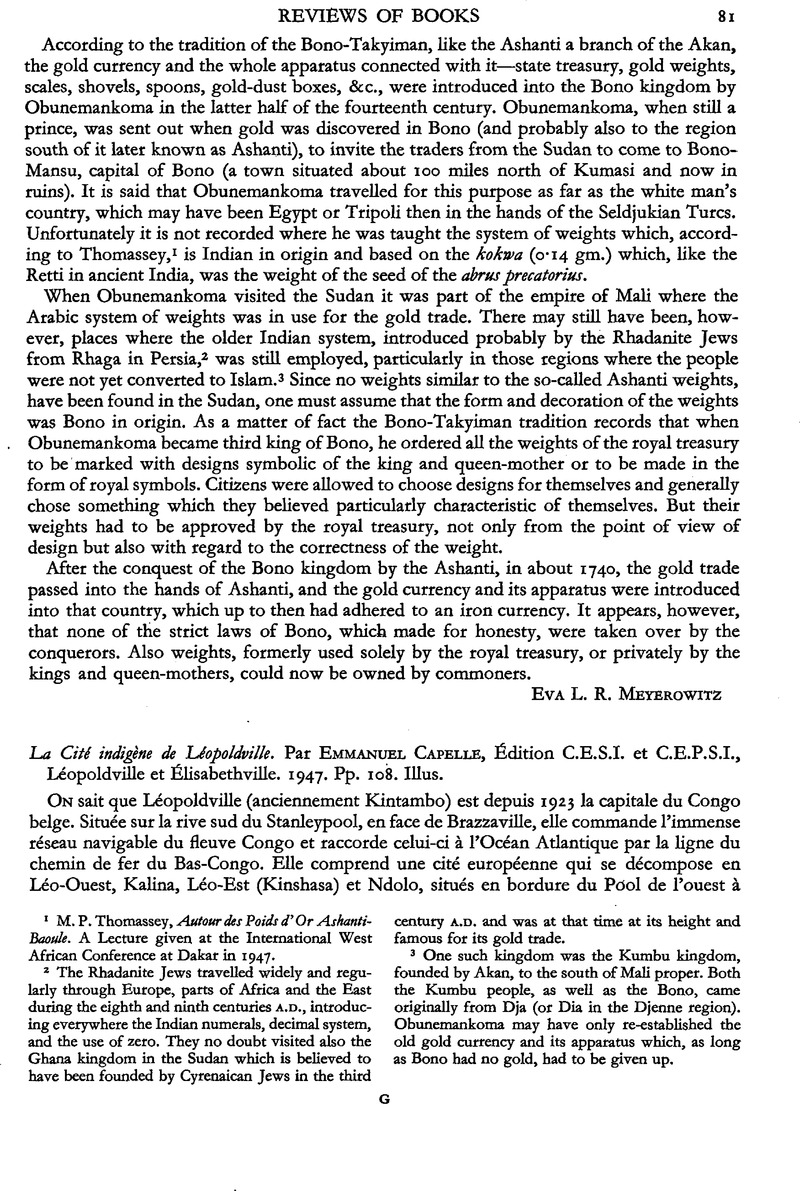No CrossRef data available.
Published online by Cambridge University Press: 21 August 2012

1 Thomassey, M. P., Autour des Poids d'Or Ashanti Baoub. A Lecture given at the International West African Conference at Dakar in 1947Google Scholar.
2 The Rhadanite Jews travelled widely and regularly through Europe, parts of Africa and the East during the eighth and ninth centuries A.D., introducing everywhere the Indian numerals, decimal system, and the use of zero. They no doubt visited also the Ghana kingdom in the Sudan which is believed to have been founded by Cyrenaican Jews in the third century A.D. and was at that time at its height and famous for its gold trade.
3 One such kingdom was the Kumbu kingdom, founded by Akan, to the south of Mali proper. Both the Kumbu people, as well as the Bono, came originally from Dja (or Dia in the Djenne region), Obunemankoma may have only re-established the old gold currency and its apparatus which, as long as Bono had no gold, had to be given up.